The construction industry has come a long way, from implementing simple safety protocols to becoming a major adopter of innovative technologies aimed at ensuring workers' safety. One area that has seen significant transformation is worker attire, specifically rain gear. This includes waterproof clothing designed to protect laborers from rain-related risks on the construction site. Rain can be a potential hazard, causing slippery surfaces which can lead to workplace accidents and injuries. With the advent of high-tech rain gear, construction workers are not just protected from getting wet but also from potential accidents. In this captivating exploration, we delve into how improved and technologically enhanced rain gear is transforming safety standards in the construction industry.
Rain-Related Risks in the Construction Industry
Stormy skies might paint a picturesque image, but for the construction industry, they illuminate rain-related risks that are a serious concern. As the thunder rolls, workers are exposed to conditions that accentuate hazards, potentially leading to a high number of work-related injuries and accidents due to heavy rain. In this section, we'll delve deeper into the dark clouds that hover over construction sites during rainy weather and how they impact the industry.
Work-Related Injuries
While construction contractors make up a small fraction, about 5%, of private sector workers, they bear a disproportionately large weight of workplace injuries. Accident-prone conditions increase exponentially when it rains, amplifying the potential dangers on the job. To illustrate,
- Wet surfaces increase the risk of slips and falls, which could result in broken bones, sprains, and even severe head injuries.
- Tools can become slippery, increasing the chance for mishandling and subsequent injuries.
- Inclement weather can also impair visibility, making it difficult for workers to see hazards in their path, adding yet another risk layer.
It's a solemn reminder that construction is a high-risk industry that must implement comprehensive measures to protect their workforce, regardless of the weather conditions.
Accidents Due to Heavy Rain
Rain doesn't simply dampen spirits; it dramatically amplifies the risk of accidents on construction sites. As downpours turn steady, inherent hazards intensify, and new ones emerge, such as:
- Wet surfaces can turn equipment handling into a risky venture, leading to collisions and abrupt accidents.
- Pools of water can camouflage dangerous materials or open areas, leading unsuspecting workers into precarious situations.
- Inclement weather can also affect the structural stability of under-construction structures, inducing a likelihood of collapses.
These looming threats underline the compelling need for stringent safety protocols to safeguard workers and minimize rain-related risks.
Although staving off rain-related dangers at construction sites can be challenging, proper risk management techniques and worker training can ensure operations proceed as safely as possible, come rain or shine.
Importance of High-Visibility Rain Gear in Construction
If someone told you that the simple act of putting on a high-visibility vest could save lives, would you believe them? It may seem hard to believe, but in the bustling world of construction, this statement rings true. Underneath the symphony of blaring horns, whirring power tools, and the shouted communication lies a lifeline draped over every construction worker - the high-visibility rain gear.
High-visibility rain gear, often referred to as "hi-vis," is particularly essential in construction for two paramount reasons:
- Worker Visibility: Frequent adverse weather conditions like rain and fog can drastically reduce visibility on construction sites. Despite day or night, sunlight or darkness, workers equipped with high-visibility rain gear stand out, ensuring that they can be easily seen by their peers and heavy machinery operators.
- Weather Protection: Constructing a skyscraper is challenging enough on a bright, sunny day. Now, imagine doing the same amidst a heavy downpour. High-visibility rain gear is designed not only to make workers stand out but also to protect them from various weather elements, ensuring that they can perform their duties effectively, come rain or shine.
This low-tech solution has shown impeccable effectiveness in Enhancing Safety with Durable Gear at construction sites. There are numerous incidents where this gear has prevented potential accidents, kept workers safe, and even saved lives. Therefore, it's no wonder that high-vis gear is embraced across construction sites globally.
Unfortunately, the significance of high-visibility vests is often vastly underrated. It's high time that we elevate the importance of this humble piece of safety equipment. Not just an addition to the tool belt, but a necessary provision - protective, life-preserving rain gear that stands as a beacon of safety amidst the chaos of the construction site.
Ubiquitous yet potent, high-visibility rain gear is not just an equipment - it's a vocal advocate for safety, silently shouting out its vital message in a language we all understand – the language of visibility. Hence, the next time you see a construction worker draped in eye-catching rain gear, remember - it's not just fashion, it's a bold statement for safety.
Emerging Rain Gear Technologies for Construction
When it comes to braving the elements in the challenging environment of construction, having the right gear can make all the difference. Enter the innovative world of rain gear technologies that are designed not only to keep the construction workers dry, but also enhance their productivity and safety. From waterproof Bluetooth-enabled jackets to breathable rain pants, and even wearable safety sensors, we're seeing exciting advancements that are reshaping the face of construction gear.
Waterproof Bluetooth-Enabled Jackets
Remember the days when a rain jacket was just a layer of waterproof fabric? Those days are long gone! The latest trend in construction rain gear are waterproof jackets equipped with Bluetooth technology. They open up a new avenue for convenience and efficiency. With this feature, construction workers can be connected to their devices sans the hassles of wires, allowing them to answer calls or listen to instructions, all while keeping their hands free and focused on the task. It also eliminates the need for carrying a phone in a pocket, which can be a serious concern during heavy rainfall.
Breathable Rain Pants
While staying dry is critical, comfort cannot be overlooked. Traditional rain gear is known to trap body heat, causing discomfort and even health risks over time. Fortunately, the latest wave of breathable rain pants are stepping up to this challenge. These apparel innovations are designed to allow air circulation, facilitating temperature regulation and reducing the risk of overheating. With these pants, construction workers can efficiently perform in wet conditions without the discomfort of sweating and overheating – a game-changing approach to rain gear!
Wearable Safety Sensors
As fascinating as the previous technologies might be, nothing compares to the strides wearable tech has made when it comes to employee safety. A shining example of this is Spot-r, a sensor that is worn by the worker and alerts a safety supervisor in the event of a slip, trip, or fall. This immediate notification can potentially save lives, reducing the time it takes for aid to reach an injured worker. It's indisputable that these sensors are an outstanding application of technology in rain gear.
As the world of construction gear advances steadily into the future, these emerging technologies truly exemplify what's possible. Remember, progress is the name of the game, and these innovations won't wait! Head to our blog post, "Rain Gear Innovations", to learn more about what's next in rain gear technologies for construction workers. Stay ahead of the curve and ensure you're equipped for whatever Mother Nature has in store!
The Role of Enhanced Protection Rain Gear in Construction
When you think of construction work, images of dust-covered hard hats, high-visibility safety vests, and steel-toe boots may immediately spring to mind. But what about rainy days? The weather plays a significant role in construction work, and with it, rain gear emerges as an essential component of safety apparel. MCR Safety rain gear, in particular, has been vouched for by construction workers to offer enhanced protection not only from rain but also a range of extreme conditions inherent to construction sites.
Nonetheless, the advantage of wearing rain gear extends far beyond staying dry.
- Protects from Hypothermia: Construction workers exposed to wet conditions without proper protective clothing are at a significant risk of hypothermia. It is a medical emergency that occurs when your body loses heat faster than it can produce heat.
- Ensures Visibility: Rainy days decrease visibility, making it an even greater necessity for workers to wear high-visibility rain gear which ensures they are seen by their co-workers on the job, thus reducing the risk of accident.
- Retains Flexibility: Proper rain gear allows construction workers to retain their flexibility and mobility, which might otherwise be hampered due to soaked and heavy clothing.
Recent advancements in the construction industry has witnessed significant innovations in protective apparel that meet the needs of workers in extreme environments. MCR Safety rain gear is one such example. Manufactured to offer premium resistance to water, while maintaining comfort and durability, these rainwear sets the bar high for protective apparel in construction.
"Protection against the elements must not be overlooked. Rain, wind, or extreme heat - the right gear can mean the difference between safety and risk at a construction site."
With this level of innovation dedicated exclusively to safety, it is fair to acknowledge that enhanced protection rain gear in the construction industry isn't just a precautionary measure - it's a necessity. So next time you spot a construction worker on a damp, dreary day, remember there's a lot more to their attire than meets the eye. Whether it's a resilient jacket or high-visibility rain pants, these unsung heroes brace themselves for the elements with their trusted armor - rain gear.
Growth of the Safety Rain Suit Market
Unprecedented weather patterns and environmental shifts have fundamentally altered our purchasing decisions and safety requirements. These changes have breathed life into certain niche markets, one of them being the safety rain suit market. As unique as it may sound, there's a burgeoning demand for high-quality, durable, safety rain suits which could withstand the wrath of extreme weather. The figures speak for themselves, with the global safety rain suit market size reaching an impressive US$ XX Billion in 2023.
Let's excavate further to understand the seed of this incredible growth.
For starters, increased awareness of safety measures during wet weather conditions, particularly within industrial and construction sectors, has added muscle to the market growth. Organizational norms and regulatory stipulations mandating specific safety gears augment such demands. Besides, recreational enthusiasts—hikers, bikers, and outdoor adventurists—significantly contribute to the overall demand for safety rain suits.
- Industrial and construction sectors: The safety rain suits market has grown exponentially in trade, construction, and manufacturing sectors, ensuring workers are safe during stormy weathers. The weather-resistant material of the suits not only protects from rain but also safeguards against potential accidents caused due to wet and slippery conditions.
- Recreational activities: Outdoor enthusiasts and adventurists have spurred the demand for safety rain suits. Ever resilient to adverse weather, these suits offer hypothermia protection that's critical during hiking, biking, or camping trips. Therefore, irrespective of the unpredictable weather, your spirit for adventure remains unbroken.
But this is just the tip of the iceberg. Seizing the multimillion-dollar potential projected by 2032, many brands jumped on the safety rain suit bandwagon, innovating designs to increase comfort, safety, and style. We're now seeing rain suits that are not only functional but also cater to the sartorial sensibilities, making them a hit among consumers across demographics. These suits offer a range of options catering to varied requirements, from high-visibility suits for late-night highway construction to heat-resistant ones for firefighters battling forest fires in rain.
So, what was once considered a mere protective layer against rain has morphed into a safety-gadget-cum-fashion-statement. The crux of this remarkable growth in the safety rain suit market is adaptability and ingenuity—of expanding beyond the confines of 'convention,' reshaping the narrative from 'need' to 'want'. In the foreseeable future, the rain will continue to pour down, but thanks to the safety rain suit market, we will never be underprepared. With the market set to reach a multimillion-dollar valuation by 2032, the future indeed looks bright—come rain or shine.
Conclusion
The imperative role of quality rain gear in the construction industry cannot be overstated. As we've highlighted throughout this article, durable, high-visibility rain gear not only mitigates risk and reduces potential work-related accidents, it represents a wise investment in the long-term productivity and wellbeing of the workforce.
Emerging technologies in rain gear, including waterproof Bluetooth-enabled jackets, breathable rain pants, and wearable safety sensors, are pushing the boundaries of what we consider to be traditional safety equipment. They now deliver a level of protection and comfort beyond what was once imaginable, changing the landscape of the safety rain suit market as we know it.
However, the pursuit of providing adequate protection against the elements does not end here. As a trusted provider of rain gear in the field, Hurricane Raingear continually strives to innovate and improve. Our commitment to exceptional quality and customer satisfaction is reflected in our handcrafted products, all assembled in Canada using 100% North-American-Made materials.
Head over to our website to explore our array of rain gear solutions built for robust conditions. With Hurricane Raingear, turning adverse weather into a non-issue at your worksite is only a click away. Remember, in the face of inclement weather, staying dry, comfortable, and visible might not just make your workday easier—it could also save a life.
Frequently Asked Questions
-
What are the key features to look for in improved rain gear for construction?
When looking for improved rain gear for construction, key features to consider include waterproof and durable materials, reinforced seams, adjustable fittings, reflective elements for increased visibility, and comfort features like breathable fabrics and ventilation options.
-
Is it necessary to invest in specialized rain gear for construction workers?
Yes, it is necessary to invest in specialized rain gear for construction workers. Regular rain gear may not provide the necessary protection and durability needed on construction sites. Specialized rain gear for construction workers is designed to withstand the demands of the job and ensure safety and comfort in wet conditions.
-
How can improved rain gear benefit construction workers?
Improved rain gear provides construction workers with increased safety, protection from the elements, and enhanced comfort during rainy weather. It helps prevent accidents, keeps workers dry, and allows them to focus on their tasks without being hindered by wet clothing or discomfort.
-
Are there any regulations or standards for rain gear in the construction industry?
Yes, there are regulations and standards for rain gear in the construction industry. These standards often mandate that rain gear must be waterproof, durable, and provide adequate visibility for workers. It is important to ensure that the rain gear you choose meets the relevant safety standards.
-
Can improved rain gear be used in other industries or outdoor activities?
Yes, improved rain gear designed for construction can often be used in other industries or outdoor activities where protection from rain is required. However, it is important to ensure that the gear meets the specific safety requirements of the intended use and provides suitable features for the particular activity.



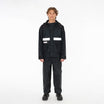



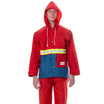


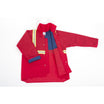

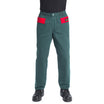



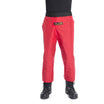






Leave a comment
This site is protected by hCaptcha and the hCaptcha Privacy Policy and Terms of Service apply.